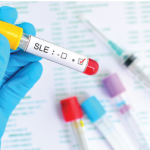Omniscan induced NF-ĸB–dependent secreted alkaline phosphatase (SEAP) production (reporter gene) in HEK293 cells expressing either TLR4 or TLR7. The authors found that only some of the Gd compounds (Omniscan and gadodiamide) induced significantly increased SEAP production in a dose-dependent manner. The other Gd compounds (MultiHance, Dotarem, Gd-EDTA, and Gd-citrate, GdBCA, Gd-DTPA, OptiMark, or ProHance) did not induce robust reporter gene activation.
The authors then examined the effects of Omniscan and gadodiamide on normal human macrophages cultured in the presence of macrophage colony-stimulating factor (M-CSF) and interleukin (IL) 10. Analysis by real-time polymerase chain reaction revealed that Omniscan and gadodiamide both caused markedly upregulated expression of multiple chemokines, cytokines, and growth factors. These include CXCL10, CCL2, CCL8, CXCL12, IL-4, IL-6, TGF-β, and vascular endothelial growth factor. Searchlight proteome multiplex arrays confirmed that the increase in gene expression translated into increased protein production. CXCL10 stood out because it had a maximal 20-fold induction (gene expression) by gadodiamide when compared with the saline control. These effects were blocked by the TLR inhibitors chloroquine and IL-1R–asociated kinase (IRAK) 1 and 4.
Dr. Pullen is a medical writer based in the Chicago area.
Reference

